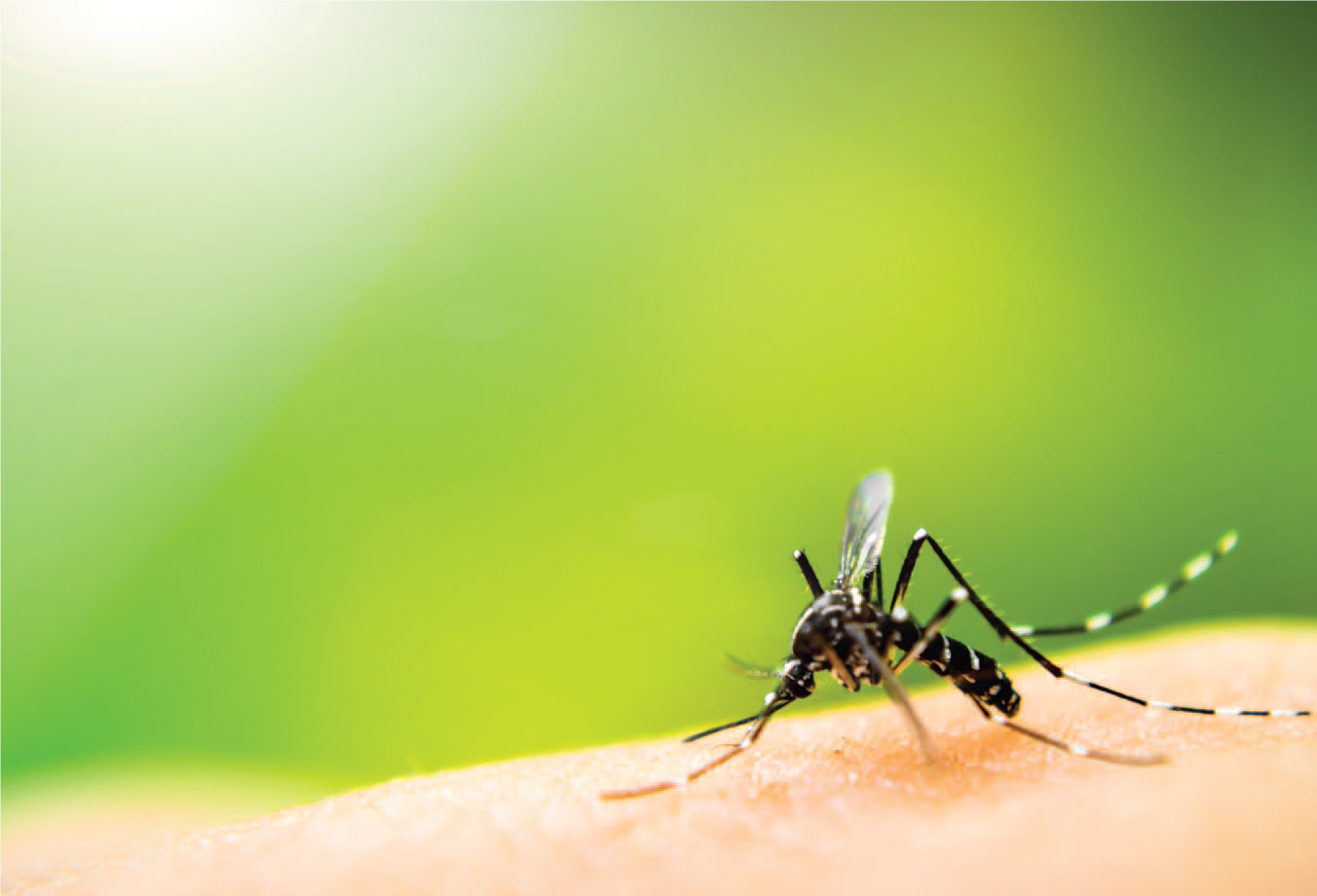There’s a lot going on in Indian curry dishes… but maybe not as much as you think.
Indian food is difficult to cook unless you own an Indian restaurant. In places like New Jersey, where this cuisine has become increasingly popular, even the most intrepid diners still operate under this assumption. Home chefs who have mastered the intricacies of Vietnamese Pho, Thai stir fry, Jamaican jerk chicken and Brazilian barbecue not only tend to be intimidated by the thought of diving into Indian curry, they find the thought of navigating their way through the aisles of places like Patel Brothers utterly terrifying.
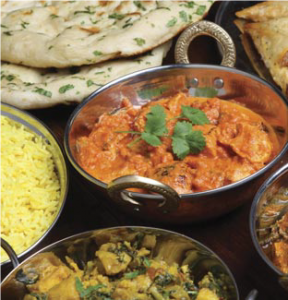
www.istockphoto.com
Granted, if you’re new to cooking Indian curries at home, you might feel a little overwhelmed. Curry is all about subtlety and complexity, after all. But once you stop to take it all in and begin to learn the differences in the food of the wonderful country of India, things will start to fall into place. Your journey into Indian cuisine will be easy and enjoyable, and change any preconceived ideas that Indian food is difficult to cook.
With 29 states and seven union territories, it is said that the language and food of India changes every 50 miles as you travel the subcontinent. Each state has its own regional specialties, and then there are sub-cuisines that reflect religion, caste, the climate and availability of local ingredients. For example, a lentil stew called sambar—known throughout the country’s southern states—will be made slightly differently wherever you visit.
Not surprisingly, everyone claims that their version is the best. Sound familiar?
It would be impossible to put all the curries of India in a single book. Great tomes have been written, and still none can be considered truly comprehensive; such is the nature of a cuisine that caters to almost 1.4 billion people—and where the ingredients used in a dish can change from village to village and even household to household (all without recipes to guide them!). It is testament to Indians’ love of food that a recipe will be refined and perfected over time to suit personal tastes: a little more spice here, a different vegetable there, and then passed down through the generations to create family favorites.

Despite these subtle differences, there are, of course, popular dishes that everyone cooks and for which India is famous, and last year I collected 50 of the best (and easiest) vegan, vegetarian and non-vegetarian recipes to make from scratch in 50 Easy Indian Curries. I also included simple instructions for pastes, rice and breads to complete an Indian meal. With a few essential Indian pantry staples and fresh ingredients—all of which can be found at any decent supermarket—each curry can be made in an hour or less, or thrown into a saucepan and left to slow cook on the stove while you get on with something else. The keys are ease and speed (plus some fun shopping adventures).
Make A List

www.istockphoto.com
On your next trip down the GSP to Patel’s (or another of New Jersey’s growing number of South Asian supermarkets), bring this list along. It’s what you’ll need to stock your “Indian Pantry” and execute every curry recipe in this article.
Asafoetida • Pure asafoetida (or heeng) has a strong, almost off-putting smell that dissipates when cooked and is used as a substitute for garlic and onions by Indians who avoid these ingredients. Just a pinch of asafoetida is enough to flavor a dish. You will find it in small plastic containers, diluted with rice or wheat flour to dull down the pungent smell.
Cardamom • Cardamom is a perfumed spice that is much loved throughout India. It is equally at home in baked treats and confections as in curries. You’ll notice the recipes in this story and in my book use both green and black cardamom pods, so buy both.
Chillies • Indian food is almost incomplete without chillies yet, ironically, the chilli plant is foreign to India—arriving with the Portuguese in the 15th century. Indian cuisine uses green and red fresh chillies, along with chilli powder, the most famous of which comes from Kashmir.
Cinnamon • Whereas cinnamon is often reserved for baking in the U.S., in India it is part of a collection of whole spices that are added to curries. Often confused with cassia—which comes from China and has a slight amount of heat—real cinnamon only grows in Sri Lanka.
Cloves • Cloves, which are not native to India, have a strong, astringent flavor profile and should be used sparingly in dishes.
Coriander • Coriander seeds are used extensively in Indian cuisine for their warm, nutty flavor. Lightly toasted, they become even more fragrant and, when powdered, they tone down other strong flavors, such as chilli. Coriander leaves (aka cilantro) are commonly added as a garnish and never cooked in order to retain their vibrant green color.
Fenugreek • The whole seeds are used as a tempering in dals, as well as being added to Indian pickles. Fresh fenugreek leaves are used extensively in cooking and their dried form—known as kasuri methi—is sprinkled on top of cooked dishes for its aromatic quality. It’s a true wonder spice.
Garam Masala • A powdery blend that roughly translates to “hot spice,” it actually doesn’t contain much heat. It is made by dry-roasting different types and quantities of spices and then blending them together. Garam masala is typically added at the end of cooking, the purpose being to add aroma and flavor, without overpowering the final dish.
Turmeric • Indian kitchens would be colorless without this wonderful spice. Known not just for its culinary use but also for medicinal and antiseptic qualities, turmeric is also the only spice that Hindus use for devotional purposes. The active ingredient in turmeric is curcumin, which is known for its healing properties. Once you gain confidence, you may even find yourself adding your own twists and flourishes. Indian food, after all, is more than an explosion of flavors, colors and spices. Like all the great world cuisines, it is a form of personal expression. Here are a half-dozen relatively simple curry dishes—each serving four—that you can make in your own kitchen and, ultimately, make your own…

Eggplant Masala
Eggplant is a popular ingredient in Indian cuisine. Roasted, grilled or fried, it adds a “meatiness” to vegetarian curries. This eggplant masala is simple and quick to make and goes perfectly with other curries. The yogurt adds a delightful fresh touch.
You’ll need…
2 large (about 2 lb.) eggplants (aubergines), cut into (3/4”) chunks
1/2 teaspoon sea salt
2 tablespoons ghee or vegetable oil
1 teaspoon black mustard seeds
3 Asian shallots, sliced
2 (3/4”) pieces of ginger, finely grated
2 garlic cloves, thinly sliced
1 long red chilli, chopped
14 oz. canned crushed tomatoes
1/2 teaspoon ground cinnamon
1/4 teaspoon ground cardamom
pinch of ground cloves
1/4 cup of natural yogurt
Cilantro and papadam (Papadam is a deep-fried crunchy dough that can be purchased pre-packaged or made at home.)
Place the eggplant in a large bowl and sprinkle with the salt. Toss to combine and set aside for 30 minutes. Rinse well and pat dry with paper towel. Heat a large heavy-based non-stick frying pan over high heat. Working in batches if necessary, add the eggplant to the dry pan and cook, stirring occasionally, for 5-6 minutes per batch, until lightly browned all over. Transfer to a plate and set aside. Heat the ghee or oil in the same frying pan over medium-high heat. Add the mustard seeds and sizzle for a few seconds. When the seeds start to crackle, add the shallot, ginger, garlic and chilli. Reduce the heat to medium and cook for 4-5 minutes, stirring occasionally, until the onion is golden. Add the tomatoes, cinnamon, cardamom, cloves and 125 ml (1/2 cup) of water and return the eggplant to the pan.
Cover and cook, stirring occasionally, for 10-15 minutes, until the eggplant is very tender and the sauce has thickened slightly. Season with a little salt, if necessary. Spoon the yogurt over the curry, garnish with coriander leaves and serve with papadams on the side.

Goan-Style Vegetable Curry
The state of Goa on the southwestern coast of India is known for its delicious fish curries, beer and a very chilled-out approach to life. But Goa also has many vegetarian dishes in its culinary repertoire, and this vegetable curry is one of the best. Coconut grows abundantly in the region, and here it adds a subtle, creamy flavor that elevates the dish.
You’ll need…
2 tablespoons coconut oil or vegetable oil
10 oz. cauliflower florets
1 large potato, peeled and cut into 1/2” pieces
1 onion, chopped
1 tomato, finely chopped
1 tablespoon ginger and garlic paste
2 small green chillies, sliced
1/2 teaspoon ground cumin
1/2 teaspoon ground turmeric
8 fl. oz. coconut milk
1 large carrot, chopped
5-6 oz. green beans, trimmed and sliced
1/4 cup freshly grated coconut, plus extra to serve (You can also use frozen grated coconut, which can be purchased at most NJ grocery stores.)
1/2 teaspoon sea salt
A handful of cilantro, chopped, plus extra to serve
1-2 teaspoons tamarind purée, to taste
Steamed basmati rice
Heat a large frying pan over medium heat and add half the oil. Add the cauliflower and potato and sauté for 4-5 minutes, until lightly browned. Transfer to a plate and set aside. Add the remaining oil to the pan along with the onion and sauté for 5-6 minutes, until softened. Add the tomato and cook for 2 minutes or until softened, then add the ginger and garlic paste and cook until fragrant. Add the chilli and spices and cook, stirring, for a further 2 minutes or until fragrant.
Add the coconut milk, along with 1 cup of water, all the vegetables and the grated coconut, and bring to a boil over medium heat. Reduce the heat to a simmer, season with the salt and cook (covered) for 10-12 minutes, until the vegetables are tender. Stir in the chopped coriander and tamarind, to taste. Garnish with extra coriander and/or extra coconut and serve with steamed basmati rice.

Goan-Style Prawn Curry
Goans are particularly proud of their prawn curries and when you make this you’ll see why. The key to this dish is to ensure that the prawns are not overcooked. Served with lime wedges for extra zing. Like all of the dishes in this story, it serves four but be warned: Everyone will probably be going back for seconds.
You’ll need…
1 tablespoon peanut oil
1 onion, finely chopped
1 small tomato, finely chopped
1 tablespoon ginger and garlic paste
2 teaspoons sweet paprika
1 teaspoon ground coriander
1/2 teaspoon ground cumin
1/2 teaspoon freshly ground black pepper
1/2 teaspoon cayenne pepper
10 fl oz. coconut milk
2 lbs. raw prawns, peeled and deveined, with tails left intact
1/2 teaspoon sea salt
1-2 teaspoons tamarind purée, to taste
Cilantro for garnish
Steamed basmati rice
Lime wedges
Heat the oil in a large frying pan over medium heat. Add the onion and cook, stirring occasionally, for 6-8 minutes, until softened and starting to brown. Add the tomato and cook for 2 minutes, or until softened. Add the ginger and garlic paste and cook until fragrant.
Add the spices and cook, stirring, for a further 2 minutes.
Add the coconut milk and bring to a boil, then reduce the heat to a simmer and add the prawns, salt and tamarind purée. Stir and cook for 4-5 minutes, until the prawns are just cooked through. Scatter with coriander leaves and serve with steamed basmati rice and squeeze the lime over the entire dish.
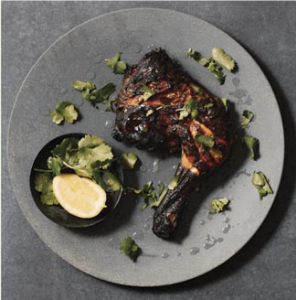
Tandoori Chicken
A tandoor is a clay oven set into the earth and fired with wood or charcoal. It can reach eye-watering temperatures of up to 900°F, allowing marinated meat to cook very quickly. Alas, not many of us have a tandoor in the backyard, but you can still rustle up a reasonable facsimile of this dish using a domestic oven. The trick is to spatchcock (aka butterfly) the chicken— a technique that will change your culinary life if you don’t know it already, even if you never cook a single Indian meal.
You’ll need…
Whole chicken, about 3 1/2 lb.
3/4 cup natural yogurt
1/2 cup Tandoori curry paste (see below)
Cilantro
Lemon wedges
1 package/4 pc. of naan
First, butterfly the chicken. Using kitchen scissors, cut along both sides of the backbone and remove. Turn the chicken over and place on a clean work surface. Using the heel of your hand, press down firmly on the breastbone to flatten. Score the chicken about 1/2 in. deep through the thickest parts of the breast, thighs and legs. Combine the yogurt and tandoori curry paste in a bowl, then rub all over the chicken, rubbing well into the scored areas. Transfer to a baking tray lined with baking paper, then cover and marinate in the fridge for 2-4 hours.
Preheat the oven to 465°F, using the convection option if you have it. Roast the chicken for 30 minutes or until it starts to char in spots. Reduce the oven temperature to 300°F and continue to roast the chicken for 5-10 minutes, until cooked through. Remove from the oven and set aside to rest, covered loosely with foil, for 10 minutes. Scatter the coriander over the chicken and serve with lemon wedges and naan on the side.
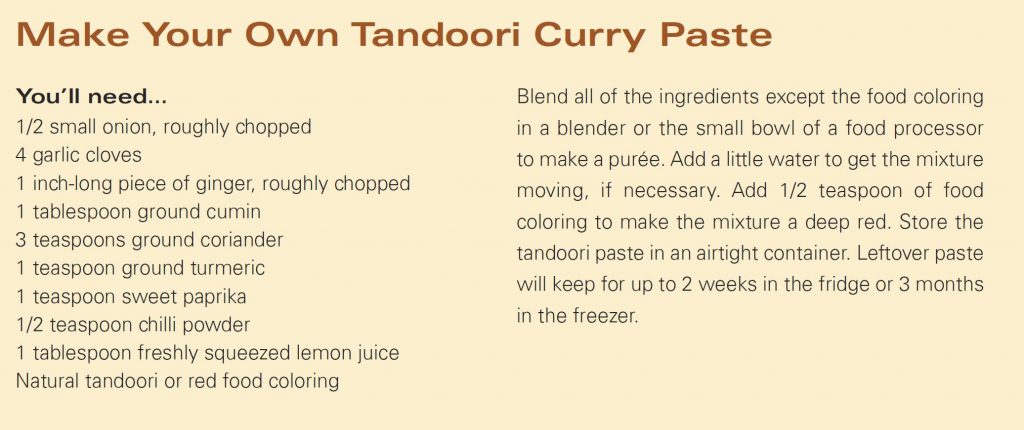

Malai Kofta
Everyone in New Jersey seems to have their own family recipe for meatballs. Well, since kofta is basically an Indian meatball, this may be your initial comfort zone. Malai kofta is an excellent dish to make when entertaining because it never fails to wow everyone. You can either serve the koftas on their own with the sauce on the side for dipping or stir the koftas through the curry at the end of cooking and serve with rice.
You’ll need…
14 oz. floury potatoes (low in moisture, high in starch)
Sea salt
1 cup grated paneer cheese (you can substitute tofu for vegans)
1 tablespoon finely chopped cashew nuts
1 tablespoon finely chopped raisins
3 tablespoons corn starch
1/2 teaspoon garam masala
1/2 teaspoon chilli powder (optional)
Vegetable oil for deep-frying
1/4 cup of cream
Steamed basmati rice
Malai kofta sauce…
1/3 cup of vegetable oil
1 onion, finely chopped
1 tablespoon ginger and garlic paste
2 cups puréed tomatoes
2 tablespoons cashew nuts, finely ground
1 teaspoon cumin seeds
1 teaspoon ground coriander
1/2 teaspoon ground turmeric
1 fresh or dried bay leaf
1 cinnamon stick
4 cloves
3 green cardamom pods, bruised
1/2 teaspoon dried fenugreek leaves, crushed
1/2 teaspoon garam masala
Peel the potatoes, then transfer to a saucepan, cover with cold water and add a good pinch of salt. Bring to a boil and cook until tender. Drain, then mash and set aside to cool. Combine the potato, paneer, cashews, raisins, corn starch, garam masala, chilli powder (if using) and 1/2 teaspoon of salt in a bowl. Knead the mixture into a soft dough, then divide into 12 portions and roll into smooth balls. Set aside.
To make the sauce, heat three-quarters of the oil in a frying pan over low heat. Add the onion and ginger and garlic paste and cook for 10 minutes. Add the tomato purée, ground cashews and 1 cup of water and simmer for 5-7 minutes, until slightly thickened. Season to taste with salt. Transfer this mixture to a food processor and blitz to a smooth sauce. Wipe the pan clean. Heat the remaining oil in the pan over medium heat and add the cumin seeds, ground coriander, turmeric, bay leaf, cinnamon stick, cloves and cardamom pods and cook, stirring, for 1 minute, until fragrant. Pour the sauce back into the pan and add the fenugreek leaves and garam masala. Gently warm through.
Back to the kofta…Heat enough oil for deep-frying in a saucepan to 375°F. Working in batches, deep-fry the kofta for 2-3 minutes, until well browned on all sides. Transfer to a plate lined with paper towel to drain, then gently stir through the sauce. Transfer the malai kofta to a serving dish and drizzle the cream over the top. Serve with the steamed basmati rice on the side.
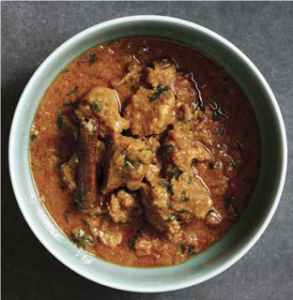
Lamb Rogan Josh
A famed dish from the beautiful state of Kashmir, the fiery red color of rogan josh comes from the chillies that are added in generous quantities. Rogan josh is usually cooked with tomatoes, but they are omitted here to allow the flavor of the lamb to shine through even more.
You’ll need…
2-plus lb. boneless lamb shoulder or leg, cut into 1” pieces
1 1/2 cups natural yogurt
1 teaspoon sea salt
2 oz. ghee (Indian clarified butter)
1 cinnamon stick
2 teaspoons green cardamom pods, bruised
4 brown or black cardamom pods, bruised
1/2 teaspoon cloves
3 onions, chopped
2 tablespoons ginger and garlic paste
1 tablespoon Kashmiri chilli powder
2 teaspoons sweet paprika
2 teaspoons ground turmeric
Large handful of chopped cilantro
1 teaspoon garam masala
4 pc. Paratha (Indian flatbread)
Combine the lamb, yogurt and 1/2 teaspoon of the salt in a large bowl. Cover and set aside to marinate. Heat the ghee in a heavy-based saucepan over medium heat. Add the cinnamon, cardamom pods and cloves and cook, stirring for 30 seconds or until fragrant. Add the onion and remaining salt, reduce the heat to medium–low and cook, stirring occasionally, for 20–25 minutes, until golden brown.
Add the ginger and garlic paste and cook, stirring for about 30 seconds, until fragrant. Add the lamb mixture, chilli powder, paprika and turmeric to the pan. Mix well and bring to a boil over medium heat. Reduce the heat to low and cook, covered, for 80 to 90 minutes, until the lamb is tender. Stir in the coriander and garam masala and season to taste. Serve with paratha on the side.
Editor’s Note: In her 50 Easy Indian Curries (Smith Street Books, $29.95), Penny Chawla covers restaurant classics—such as dal makhani, pork vindaloo and saag paneer—and lesser-known regional gems, including beef Madras and Bengali fish curry. “There is a curry here for everyone.” After watching Bend It Like Beckham, many wondered what was so special about making a “full Punjabi dinner.” Find this story at edgemagonline.com and look for bonus content that clears it all up!
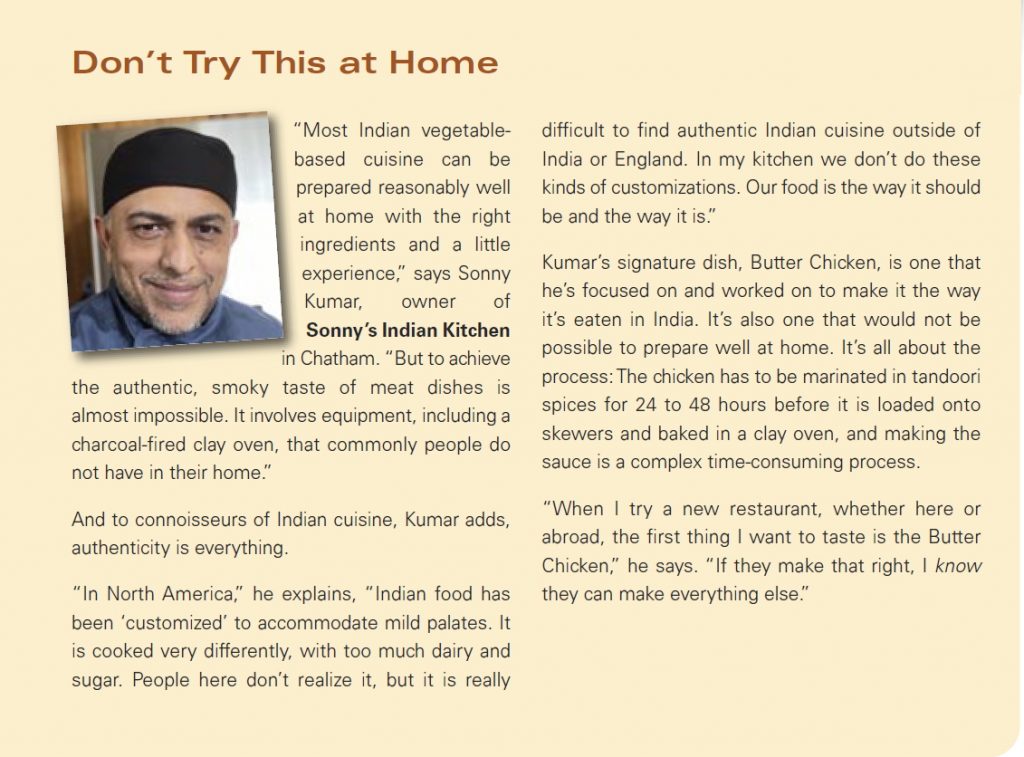














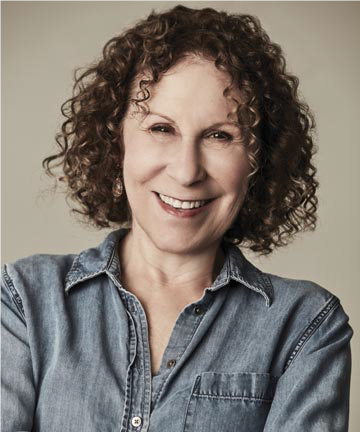




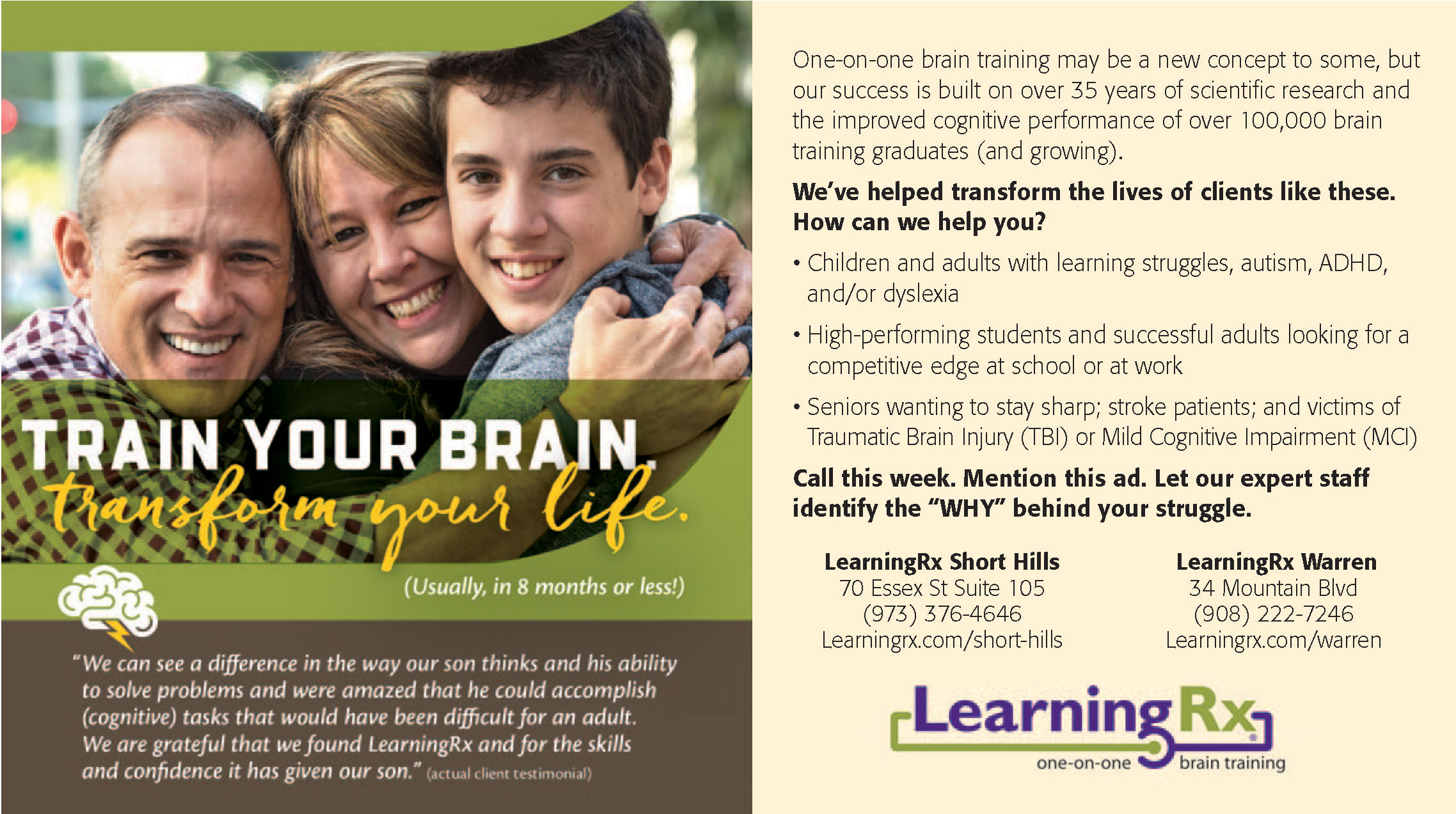







 Editor’s Note: Dr. Muniba Naqi is an internal medicine specialist and Medical Director of Hospitalist Medicine at Trinitas. Dr. Naqi has been the founding Medical Director for the Trinitas Hospitalist Department for the past seven years.
Editor’s Note: Dr. Muniba Naqi is an internal medicine specialist and Medical Director of Hospitalist Medicine at Trinitas. Dr. Naqi has been the founding Medical Director for the Trinitas Hospitalist Department for the past seven years.








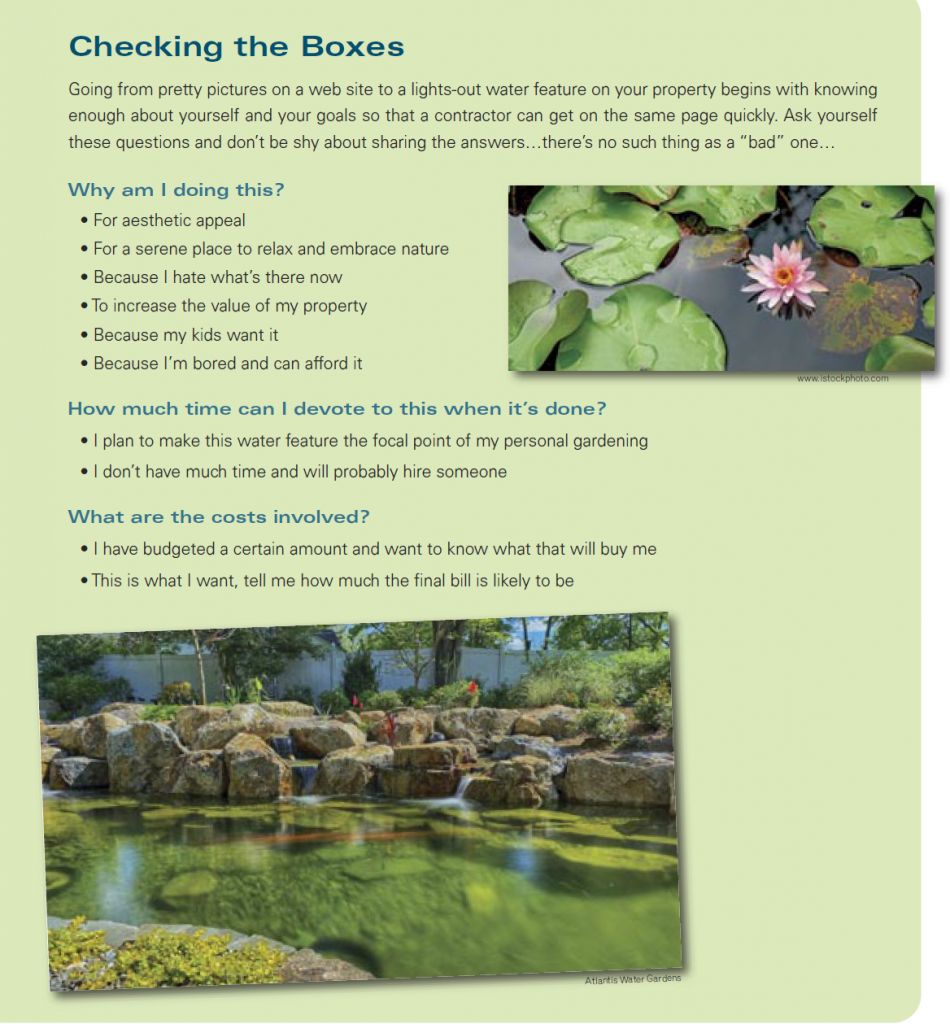



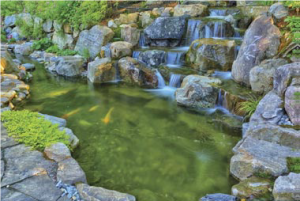




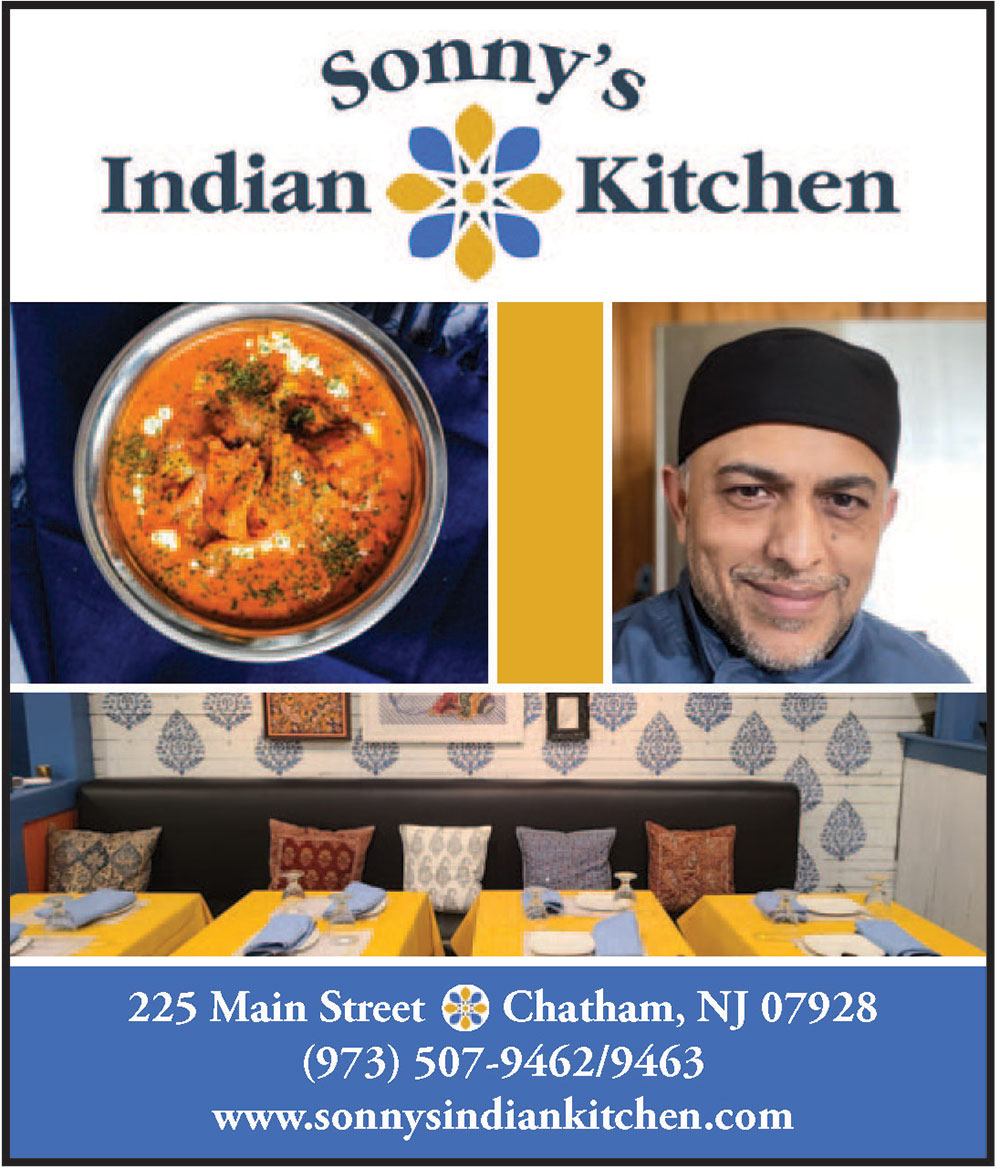




























 Getting Help
Getting Help  During the pandemic, the Institute continued to serve clients through Zoom sessions. Despite an adjustment period, therapy quality was never compromised. Some clients (especially those living at a distance from Trinitas) found teletherapy to their liking, while others rejoiced when in-person therapy resumed. Most importantly, all of the DBT clients continued to make progress in the face of heightened stress and anxiety.
During the pandemic, the Institute continued to serve clients through Zoom sessions. Despite an adjustment period, therapy quality was never compromised. Some clients (especially those living at a distance from Trinitas) found teletherapy to their liking, while others rejoiced when in-person therapy resumed. Most importantly, all of the DBT clients continued to make progress in the face of heightened stress and anxiety. Modifying ingrained behavior patterns requires a whole-hearted dedication to achieving a balance between emotional extremes and learning how to identify and make more effective choices. Before being accepted, the DBT team spends time screening prospective clients on the telephone, followed by personal interviews to discern levels of motivation, increase commitment, troubleshoot potential issues and agree on a collaborative approach to reaching goals. The DBT program provides the tools and encouragement; the commitment to apply them to daily life is up to the client.
Modifying ingrained behavior patterns requires a whole-hearted dedication to achieving a balance between emotional extremes and learning how to identify and make more effective choices. Before being accepted, the DBT team spends time screening prospective clients on the telephone, followed by personal interviews to discern levels of motivation, increase commitment, troubleshoot potential issues and agree on a collaborative approach to reaching goals. The DBT program provides the tools and encouragement; the commitment to apply them to daily life is up to the client.








 Over the past year, chances are that you have heard more facts and figures about vaccines than in all of the other years of your lifetime combined. Yet while we have all become intimately familiar with the COVID-19 vaccine, there is another vaccine on the market, which—in any other year—would have been the real headline-maker. Last year, the World Health Organization (WHO) announced that it had approved use of the first-ever vaccine that is effective against malaria, a mosquito-borne disease that can kill within 24 hours of its flu-like symptoms appearing.
Over the past year, chances are that you have heard more facts and figures about vaccines than in all of the other years of your lifetime combined. Yet while we have all become intimately familiar with the COVID-19 vaccine, there is another vaccine on the market, which—in any other year—would have been the real headline-maker. Last year, the World Health Organization (WHO) announced that it had approved use of the first-ever vaccine that is effective against malaria, a mosquito-borne disease that can kill within 24 hours of its flu-like symptoms appearing.
 The new vaccine, which has been recommended for children five years old and younger, marks a significant step in an effort to conquer malaria that has seen worldwide deaths drop by 60% in the last two decades, and the number of cases cut nearly in half. Unfortunately, progress reached a kind of plateau around 2015 and the numbers have remained more or less constant since then. The recent breakthrough, which activates the immune system to battle the malaria pathogen, owes much to the work done in speeding COVID vaccines to market.
The new vaccine, which has been recommended for children five years old and younger, marks a significant step in an effort to conquer malaria that has seen worldwide deaths drop by 60% in the last two decades, and the number of cases cut nearly in half. Unfortunately, progress reached a kind of plateau around 2015 and the numbers have remained more or less constant since then. The recent breakthrough, which activates the immune system to battle the malaria pathogen, owes much to the work done in speeding COVID vaccines to market. Impact on the Home Front
Impact on the Home Front 

